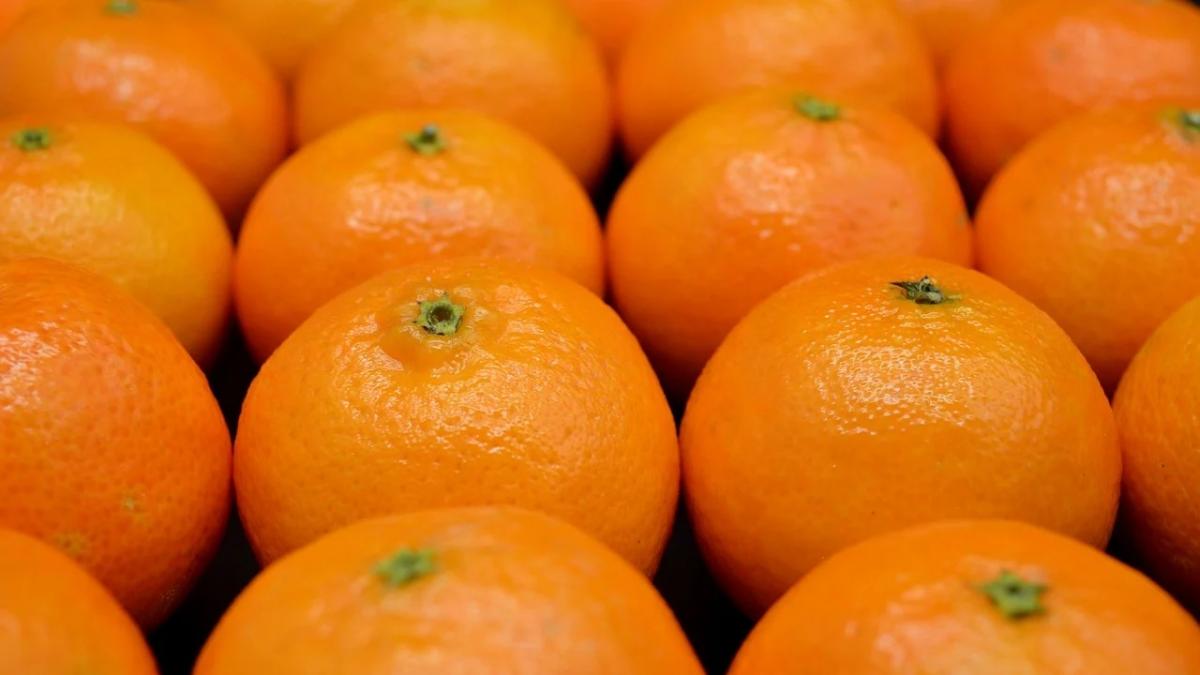You are here
Back to topGlobal Citrus Output Set To Top 100 Million Tons in 2023/24

According to the Citrus: World Markets and Trade report recently released by the U.S. Department of Agriculture’s Foreign Agricultural Service, this season’s weather conditions in many of the major citrus-producing countries have been favorable. As a result, the global production of various citrus items is estimated to reach 103.7 million metric tons. This increase in supply is anticipated to drive growth in consumption and exports. In particular, China’s orange production is expected to reach a new record of 7.6 million metric tons. In addition, Egypt’s orange exports are set to hit a record-breaking 2 million metric tons, while South Africa’s exports of oranges and lemons are also predicted to achieve historic highs.
Oranges
Increased production in Argentina, the United States and Turkey is anticipated to more than offset lower output in Brazil and the European Union, causing global orange production in the 2023/24 season to slightly increase to 48.8 million metric tons.
As a major Northern Hemisphere orange producer, China has benefited from favorable weather conditions and a larger number of fruit-bearing trees in Jiangxi province. Consequently, its orange production is expected to slightly increase to a record-breaking 7.63 million metric tons. Consumption is also forecast to rise, while imports and exports are both anticipated to remain steady.
Dry and unusually warm summer conditions in the European Union are expected to cause production to decrease by 89,000 metric tons to 5.5 million metric tons. However, a reduction in consumer demand is also expected to lead to lower imports.
Benefiting from favorable weather conditions during flowering, Egyptian production is estimated to grow by 3% to 3.7 million metric tons. Meanwhile, exports are anticipated to rise by 25% to a historic high of 2.0 million metric tons, solidifying Egypt’s position as the world’s top orange exporter.
Favorable weather conditions are also expected to boost Florida’s production by 30%, aiding the sector’s recovery from the impact of Hurricane Ian last season, while California’s output is projected to increase by 6%. Overall, U.S. production is forecast to increase by 280,000 metric tons to 2.5 million metric tons, while orange juice production is also set to grow by nearly 30% to 110,000 metric tons.
Among the major Southern Hemisphere producers, unfavorable weather during the second flowering period is expected to decrease Brazil’s production by 173,000 metric tons to 16.5 million metric tons. Orange consumption in the country is forecast to slightly increase, but the volume destined for processing is expected to drop. Brazil is the world’s largest orange juice producer, with an estimated production in 2023/24 of 1.1 million metric tons. Although this represents a decrease of 2%, Brazil is still expected to account for over three-quarters of global orange juice exports.
In South Africa, orange production is forecast to remain flat at 1.6 million metric tons, although improved fruit quality is set to drive exports to a historic high for the fourth consecutive year. Australia is expected to see a bountiful harvest in the 2023/24 season, with output projected to grow by 5% to 530,000 metric tons to result in increased exports. As growers increasingly switch to more profitable mandarins and lemons, Chile’s orange production is expected to decrease by 2% to 175,000 metric tons.
Tangerines/Mandarins
Because of favorable weather in China and Turkey, global tangerine/mandarin production in the 2023/24 season is projected to increase by 3% to 38.0 million metric tons.
In China, production in Hunan, Hubei, Guangxi and Jiangxi provinces is expected to grow, resulting in an estimated national output of 26.9 million metric tons, an increase of 400,000 metric tons. Consumption and exports are also anticipated to increase accordingly. Indonesia, the Philippines, Thailand and Vietnam are expected to remain the main overseas markets for Chinese tangerines and mandarins.
Despite favorable weather conditions during the fruit-setting period and higher output in Greece, these are not expected to be sufficient to offset the production decrease in Spain caused by high summer temperatures. Overall production in the European Union is thus expected to decrease by 5% to 2.7 million metric tons. Meanwhile, an expanded cultivation area and good weather conditions are set to cause Turkey’s production to rebound by 42% to 2.6 million metric tons.
Adverse weather conditions and reduced yields in California are expected to lead to a 7% decline in production across the United States, with a total output of 822,000 metric tons. Owing to the impact of El Niño, Peru’s production is estimated to decrease by 1% to 545,000 metric tons. In addition, Chilean production is expected to grow by 19,000 metric tons to 287,000 metric tons because of an increase in the harvested area.
Grapefruit
Despite lower production in South Africa, a marginal increase in China’s output is anticipated to contribute to a modest rise in global production, which is forecast to reach 6.9 million metric tons in 2023/24.
Owing to favorable weather conditions and higher yields, China’s production is expected to grow slightly to 5.2 million metric tons, leading to increases in consumption, exports and volume sent for processing. Among other major Northern Hemisphere producers, Mexico’s production is projected to rise by 2% to 500,000 metric tons, while U.S. production is expected to increase by 6% to 316,000 metric tons. Turkey’s production is anticipated to rise by 10% to 217,000 metric tons, and total European Union production is forecast to grow by 6% to 104,000 metric tons because of a recovery from the drought seen in Spain last year.
South Africa’s production is expected to decline by 5% to 400,000 metric tons. However, its grapefruit exports are set to increase as the quantity of grapefruits used for processing decreases and operations at the Port of Durban return to normal by the start of the export season in March. China and the European Union are anticipated to remain the largest export markets for South African grapefruit.
Lemons/Limes
Increases in production in the European Union, South Africa and Turkey mean that global lemon and lime production should grow by 225,000 metric tons to reach 10.0 million metric tons in the 2023/24 season.
Among Northern Hemisphere producers, Mexico’s production is forecast to drop by 5% to 3.0 million metric tons, with growers expecting citrus greening disease to impact yields. However, Turkey’s production is projected to increase by 264,000 metric tons to a record-breaking 1.6 million metric tons on account of favorable weather conditions and better yields, with both consumption and exports reaching or approaching historic highs.
Spain’s output is also set to reach a historic high driven by favorable growing conditions and an expanded harvested area, which is forecast to cause total production in the European Union to increase by 16% to 1.7 million metric tons. Conversely, unfavorable weather in California is set to make U.S. production decrease by 254,000 metric tons to an estimated 758,000 metric tons.
In South Africa, production is forecast to grow by 10% to 720,000 metric tons, likely leading to the eighth consecutive year of record-breaking exports. Among other Southern Hemisphere producers, Argentina’s output is projected to rise by 3% to 1.9 million metric tons, while Chile’s production is predicted to increase by 11,000 metric tons to 175,000 metric tons.
Image: Pixabay
This article was translated from Chinese. Read the original article.












Add new comment